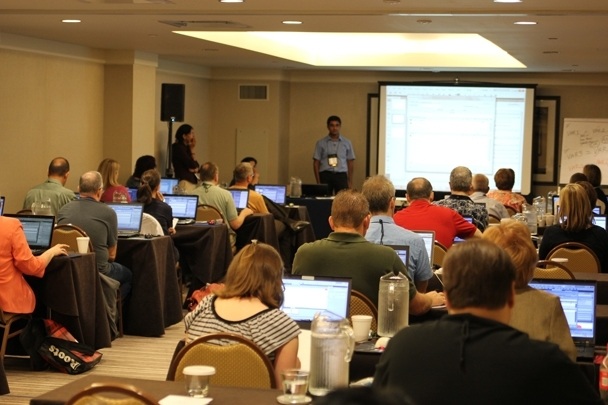Navigating The Nuances Of eLearning
In recent years, eLearning has emerged as a prominent force reshaping the education landscape. Its rapid adoption, bolstered by global events and technological advancements, has transformed how we perceive and experience learning. Digital platforms have created opportunities for education to reach corners of the world previously inaccessible, breaking down barriers of distance and democratizing knowledge. Yet, while this digital shift has many evident benefits, it also presents a myriad of challenges. These challenges extend beyond the occasional technical glitch or software mishap. They dive deep into the socio-emotional, environmental, and pedagogical realms, presenting obstacles that can, at times, feel as daunting as traditional classroom hurdles.
Many students, when faced with these difficulties, might be tempted to give up or seek external help. It’s not uncommon to hear phrases like "I wish someone could just write my paper for me," or "I miss the simplicity of the physical classroom." Such sentiments underscore the need to address and understand the multifaceted nature of eLearning challenges.
Understanding The Scope Of eLearning Challenges
Before delving into specific issues, it’s essential to grasp the broad spectrum of challenges eLearners face. These problems aren’t just about a slow internet connection or software that refuses to cooperate. They touch on deeply rooted aspects of learning experiences that might be overlooked in the initial excitement of virtual education.
The challenges in eLearning can generally be categorized into three areas: socio-emotional, environmental, and pedagogical. Each category presents its unique set of hurdles, requiring tailored solutions and strategies.
Socio-Emotional Challenges And Solutions In eLearning
1. Isolation And Loneliness
eLearning, for all its flexibility and accessibility, often places students in solitary environments, cut off from the usual classroom interactions. This isolation can lead to feelings of loneliness, which in turn can impact motivation, retention, and overall well-being. The absence of face-to-face interaction, group discussions, or simple exchanges between classes can create a sense of detachment from the learning process.
Solution
Combatting this requires proactive efforts. Forming or joining virtual study groups can simulate classroom discussions. Engaging in eLearning communities, participating in webinars, or even simple regular check-ins with classmates can mitigate feelings of isolation. Platforms that prioritize community engagement and interactive features can also be a boon in this area.
2. Motivation And Engagement
The home environment, while comfortable, is rife with distractions. From the beckoning of a cozy bed to the lure of social media or household chores, staying motivated can be a significant challenge. The absence of a teacher’s direct supervision can sometimes lead to procrastination and diminished engagement with course material.
Solution
Structured schedules, setting daily or weekly personal learning goals, and even gamification elements in eLearning platforms can boost motivation. It might also be beneficial to adopt techniques such as the Pomodoro method or other time-management tools to ensure dedicated focus periods followed by short breaks.
Environmental Challenges And Solutions In eLearning
1. Creating An Effective Learning Space
Virtual classrooms demand a different kind of engagement from traditional classrooms. An environment that’s conducive to eLearning is not just about a good internet connection. It’s about creating a space where a student can focus, free from unnecessary distractions, and where they can engage with their course materials comfortably.
Solution
It’s essential to designate a specific area in the home for studying, even if it’s just a small desk in a quiet corner. Keeping this space organized and decluttered can significantly increase productivity. Investing in proper lighting can reduce eye strain, and ergonomic furniture can prevent postural problems in the long run. Ambient noise apps or headphones can help drown out distracting sounds for those without the luxury of a silent workspace.
2. Balancing Home Life And Learning
For many, the home is not just a place of study; it’s where they live, relax, and engage in numerous other activities. This merging of academic and personal spaces can blur boundaries, leading to either overwork or constant distraction.
Solution
Clear boundaries need to be set. Scheduled breaks, during which one physically moves away from the study area, can help differentiate "study time" from "personal time." Communicating with family members or housemates about one’s study schedule can reduce interruptions. Using tools like digital calendars or "Do Not Disturb" signs can also signal to others when it’s study time.
Pedagogical Challenges And Solutions In eLearning
1. Engaging With Content
Not all content designed for traditional classrooms translates seamlessly to the virtual format. The eLearning experience is distinct, and at times, students might find it difficult to engage with lessons that aren’t interactive or adapted to online platforms.
Solution
Educators can incorporate interactive modules, quizzes, and simulations to make lessons more engaging. As a student, seeking supplementary materials like videos, podcasts, or even discussion forums can make comprehension more manageable and more engaging. Engaging with peers on platforms like discussion boards or even forming virtual study groups can help clarify doubts and enhance understanding.
2. Seeking Feedback And Clarifications
In a traditional classroom, a student might raise their hand to ask a question immediately. In virtual learning, this immediacy can be lost. Waiting for email replies or scheduled virtual meetings can sometimes slow down the learning process.
Solution
Educators can offer virtual office hours, where students can pop in for quick clarifications. Platforms that support real-time chat or discussion boards can also facilitate faster responses. From a student’s perspective, utilizing peer feedback, reaching out proactively, and leveraging asynchronous communication tools can ensure they’re on the right track and not waiting too long for essential feedback.
Empowering Self-Driven Learning
The shift towards eLearning has also underscored the importance of autonomy in education. Virtual classrooms, by nature, require students to take more initiative in their learning journey. With the lack of physical presence and direct oversight, eLearners must harness the power of self-regulation and intrinsic motivation to steer their academic path successfully. Being proactive, seeking resources outside the prescribed curriculum, and fostering a genuine curiosity can greatly enhance the eLearning experience. Furthermore, the beauty of online education is its expansive scope. With countless resources at their fingertips, students can go beyond their course materials, deepening their understanding and broadening their horizons.
Conclusion
As the realm of eLearning continues to evolve, students find themselves navigating challenges they hadn’t anticipated. While some might be tempted to seek out external help for immediate relief, the true essence of virtual education lies in overcoming these challenges organically, learning resilience, adaptability, and self-reliance.
Addressing the multifaceted problems of eLearning isn’t just about technical fixes or seeking external aid. It’s about creating a holistic approach that takes into account emotional, environmental, and pedagogical elements. By understanding, acknowledging, and then acting on these challenges, students can not only survive but truly thrive in virtual classrooms, well-equipped for the demands of our increasingly digital world.









